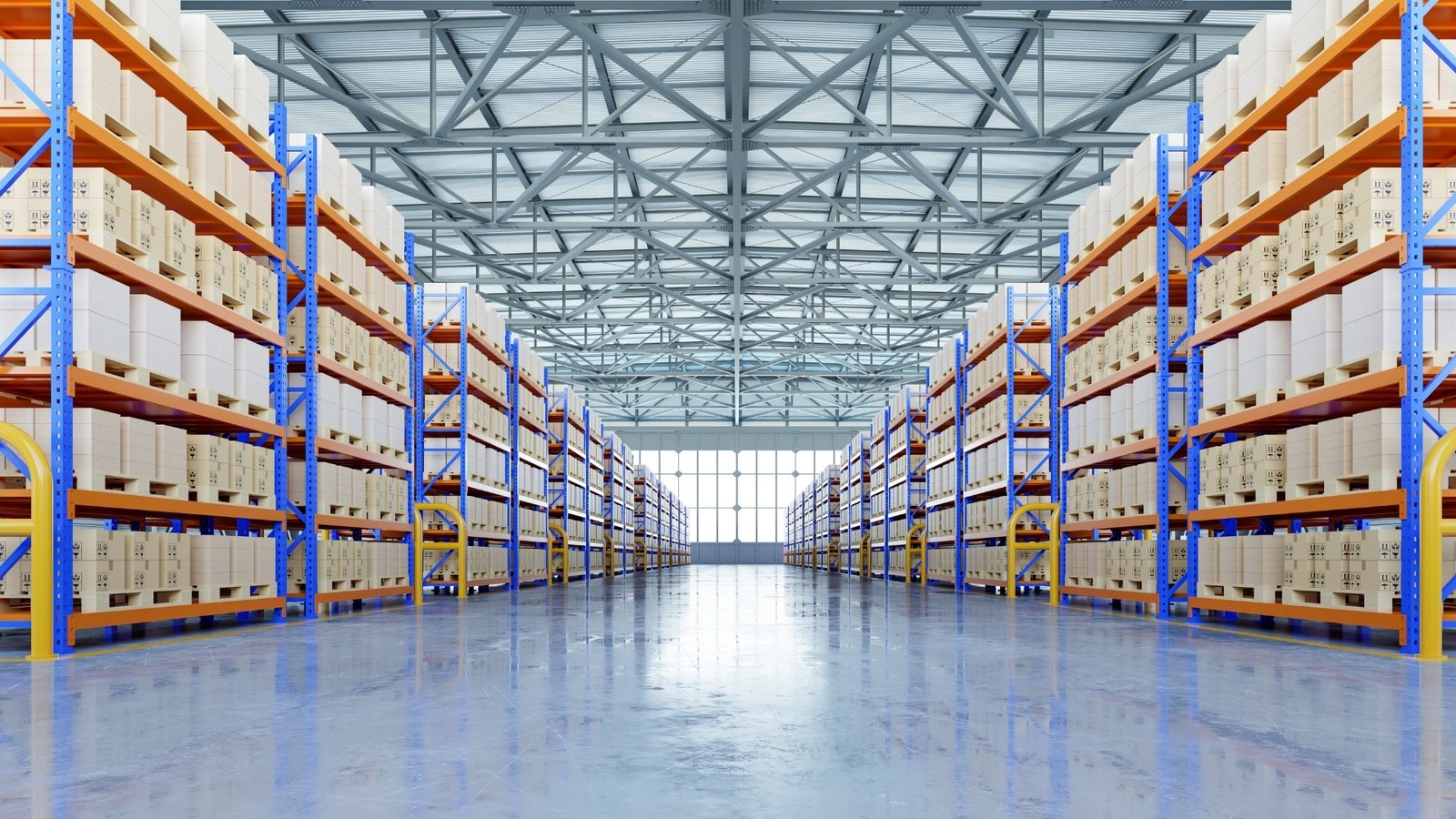Introduction to Space Utilization in Warehousing
Space utilization is a critical aspect of logistics warehousing that directly impacts operational efficiency and overall performance. In the context of warehousing, this concept refers to the effective use of available space to accommodate goods, optimize inventory handling, and streamline the flow of operations. As businesses aim to enhance productivity, the efficient allocation of space becomes increasingly vital, as it influences various factors, including cost management and customer satisfaction.
The importance of space utilization in warehousing cannot be overstated. Efficient space usage not only helps reduce operational costs but also enhances inventory management practices. By maximizing space, warehouses can store more products without the need for extensive expansions or additional facilities, which leads to decreased overhead costs and increased profitability. Furthermore, improved space management allows for better organization of inventory, minimizing the risk of stockouts and overstock situations. This tailored approach ensures that products are easily accessible and appropriately categorized, facilitating smoother operations.
Additionally, effective space utilization in logistics warehousing plays a significant role in enhancing customer satisfaction. As customers increasingly demand faster delivery times and reliable service, warehouses that prioritize optimized space usage can respond more swiftly to orders, leading to improved fulfillment rates. By maintaining a well-organized and strategically utilized warehouse, businesses can ensure that they are meeting their clients’ expectations while simultaneously positioning themselves competitively in the market.
In essence, understanding and implementing efficient space utilization strategies are essential for modern warehouse operations. As we delve deeper into the strategies aimed at optimizing space, it is important to recognize the foundational role that space management plays in fostering a productive and responsive logistics environment.
Assessing Your Warehouse Space
To maximize space utilization in logistics warehousing, an accurate assessment of the current warehouse space is essential. The first step in this evaluation process is to measure the available space comprehensively. This involves not just calculating the total square footage but also determining the usable space, taking into account structural elements such as columns, walls, and doorways that may impede operations.
Using tools such as digital floor plans or warehouse management systems can streamline this measurement process. These technologies often provide insights into layout efficiency and can assist in planning for optimal storage configurations. Once the measurements are established, the next phase is to identify inefficiencies in the existing setup. Common areas of concern include underutilized storage, excessive aisle widths, and an improper arrangement of inventory. Conducting an inventory audit can help pinpoint which items occupy the most space and which are seldom accessed, thereby prioritizing the reallocation of resources.
A crucial aspect of warehouse assessment involves understanding the flow of goods throughout the facility. The movement of products, from receiving to storage to shipping, should be as streamlined as possible to enhance efficiency. This can be achieved by mapping out the current workflow and identifying any bottlenecks or delays that may hinder operations. Analyzing how goods are stored and accessed, coupled with worker movement patterns, can reveal valuable insights into potential improvements.
In summary, assessing your warehouse space through careful measurement, identification of inefficiencies, and evaluation of the goods flow is fundamental for improving space utilization. By dedicating time and effort to this assessment, logistics professionals can develop a strategic approach that maximizes space and enhances overall performance in their warehouse operations.
Utilizing Vertical Space Effectively
Maximizing space utilization in logistics warehousing is crucial for enhancing operational efficiency. One of the most effective strategies for achieving this is through vertical space management, which enables businesses to store more items within the existing warehouse footprint. By leveraging height, warehouses can significantly increase their storage capacity without the need for costly expansions.
Implementing racking systems is one method that can improve vertical storage capabilities. Racks can be customized to accommodate various product sizes and weights, allowing for a more organized storage solution. For example, pallet racking systems can create multiple levels of storage, while using the vertical space available in the warehouse. This configuration not only increases the amount of product stored but also streamlines the retrieval process, enhancing overall efficiency.
In addition to racking systems, shelving units can also provide an efficient way to utilize vertical space. Shelving allows businesses to stack products upward, maximizing the available height. Adjustable shelving systems are particularly beneficial, as they offer the flexibility to accommodate different items and can be easily modified as storage needs change. Employing modular shelving can enable organizations to respond quickly to inventory fluctuations without compromising space efficiency.
Another innovative approach to utilizing vertical space is the incorporation of mezzanines. A mezzanine is an intermediate floor built between two main floors of a building, creating additional storage space without altering the warehouse’s structure significantly. This additional level offers a wide range of possibilities, including office spaces, packing areas, or overflow storage. By integrating mezzanines, warehouses can effectively transform underutilized vertical space into functional areas that support operational requirements.
Through these techniques, such as racking systems, shelving, and mezzanines, businesses can harness vertical space effectively, leading to substantial improvements in storage capacity and operational performance. Implementing these strategies is essential in today’s competitive logistics environment, as it promotes optimal performance and efficiency in warehousing operations.
Optimizing Warehouse Layout
Efficient warehouse layout is a critical aspect of logistics warehousing that significantly contributes to maximizing space utilization and overall performance. Different layout designs, such as U-shaped, L-shaped, and straight-line configurations, can be employed based on the specific needs and operational workflows of the facility. Each design offers unique advantages that can enhance the efficiency of inventory management and order fulfillment.
The U-shaped layout is particularly effective in facilities where inbound and outbound processes are closely linked. This arrangement allows for seamless movement between receiving, storage, and shipping areas, thus minimizing the travel distance for workers and reducing the potential for bottlenecks. On the other hand, L-shaped layouts can be beneficial in settings where space constraints are present, providing a clear segregation between different operational zones while still optimizing the flow of material handling.
Straight-line layouts tend to optimize linear flow, making them suitable for warehouses focused on high-volume processing. This design minimizes the amount of turning required by workers and reduces congestion, which can enhance picking efficiency. An essential aspect of optimizing these layouts is the strategic arrangement of inventory. Utilizing techniques like ABC classification helps in placing high-demand items closer to shipping areas, thereby reducing travel time for warehouse staff.
Moreover, integrating vertical storage solutions can drastically increase the use of available space without requiring a larger footprint. By employing shelving, racking systems, and automation technologies, warehouses can efficiently store more products per square foot, ensuring that space is utilized to its fullest potential. Effective signage and clear pathways also play a vital role in enhancing the flow of operations, as they guide employees and reduce the chances of confusion during picking and replenishment tasks.
In conclusion, an optimized warehouse layout takes into account various design configurations and strategically organized inventory locations to foster improved efficiency and productivity within logistics operations. Implementing these strategies effectively requires a thorough understanding of operations, continuous monitoring, and periodic adjustments based on changing demands.
Implementing Advanced Inventory Management Systems
In the ever-evolving field of logistics warehousing, the implementation of advanced inventory management systems plays a pivotal role in maximizing space utilization. These systems, particularly warehouse management software (WMS), are designed to track and manage inventory levels with remarkable precision. By employing such technology, businesses can drastically enhance the efficiency of their operations, leading to optimal performance in warehousing.
One of the primary benefits of utilizing advanced inventory management systems is their ability to automate various warehousing processes. This automation not only reduces the likelihood of human error but also streamlines the workflow, allowing for quicker response times to changing demands. With real-time inventory tracking capabilities, businesses gain valuable insights into stock levels and movement patterns, enabling more informed decision-making regarding space allocation.
Moreover, advanced inventory management systems greatly improve demand forecasting. By analyzing historical data along with market trends, these systems can predict future inventory needs. This foresight allows companies to adjust their stock levels accordingly, ensuring that warehouse space is optimally utilized. Consequently, excess inventory can be minimized, reducing the risk of overcrowding and ensuring that products are stored in a manner that maximizes available space.
Additionally, integrating such technology fosters enhanced communication within the supply chain. Stakeholders can access inventory data in real time, ensuring alignment between suppliers, manufacturers, and distributors. This coordination further aids in the efficient use of warehouse space, as it reduces delays and allows for better scheduling of inbound and outbound shipments.
In summary, the integration of advanced inventory management systems into logistics warehousing is essential for maximizing space utilization. By automating processes, improving demand forecasting, and enhancing communication, these systems contribute significantly to the optimal performance of warehousing operations.
Utilizing Automation and Robotics
The implementation of automation and robotics in logistics warehousing has revolutionized the way space is utilized, leading to significant improvements in both efficiency and performance. Automated storage and retrieval systems (AS/RS) are among the most prominent technologies in this domain. These systems streamline the process of storing and retrieving products, enabling warehouses to increase their storage density by using vertical space that is often underutilized. By minimizing the need for wide aisles, AS/RS not only enhance the utilization of available space but also contribute to quicker retrieval times, thereby improving overall operational performance.
In addition to AS/RS, various robotic technologies are now employed to further optimize warehousing operations. Robots equipped with advanced sensors and navigation systems can efficiently transport goods within a warehouse. This automation reduces the likelihood of human error, increases the speed of operations, and ultimately allows for a higher volume of product movement. Furthermore, through the integration of robots, warehouses can implement more flexible layouts, accommodating tighter spaces without sacrificing productivity.
Conveyor systems also play a critical role in maximizing space utilization. These systems facilitate the seamless movement of goods throughout a warehousing environment, ensuring that products are efficiently transported without the need for excessive manual handling. As conveyors can be configured in various designs, including curved and spiral layouts, they can be adapted to fit within the spatial constraints of a warehouse while enhancing operational flow.
By employing these technologies, logistics companies can create an environment where space is utilized efficiently, leading to reduced operational costs and improved service levels. The synergy between automation, robotics, and smart warehousing creates a robust infrastructure that not only optimizes space but also enhances overall performance.
Implementing Just-In-Time (JIT) Inventory Strategies
Just-In-Time (JIT) inventory strategies represent a pivotal approach in modern logistics warehousing, aiming to optimize space utilization while enhancing operational performance. JIT is characterized by the timely procurement of goods, which minimizes the amount of inventory held in a warehouse. This approach allows businesses to maintain adequate stock levels without overcommitting capital to excess inventory. By synchronizing production schedules with demand, companies can significantly decrease their storage costs and improve overall efficiency.
One of the primary advantages of adopting JIT inventory strategies is the reduction in warehouse space requirements. Traditional inventory systems often rely on maintaining large stockpiles of products, leading to cluttered storage areas and inefficient space usage. In contrast, JIT encourages regular, smaller deliveries tailored to current demand, facilitating a cleaner and more organized warehousing environment. As a result, organizations can allocate freed-up space towards value-added activities, such as enhancing order fulfillment processes or accommodating new operational technologies.
Moreover, implementing JIT can contribute to greater flexibility in warehouse arrangements. With less reliance on bulky inventory, warehouses can transition towards more dynamic layouts that can easily adapt to changes in product lines or market demands. This flexibility enhances responsiveness and can lead to improved customer satisfaction by facilitating quicker turnaround times. Furthermore, the integration of JIT with technology such as inventory management systems allows for real-time tracking and adjustments, which fosters a proactive rather than reactive approach to inventory management.
In conclusion, JIT inventory strategies provide significant benefits for logistics warehousing by minimizing stock levels, reducing storage costs, and promoting flexible space utilization. This method not only enhances efficiency but also positions businesses to respond adeptly to fluctuating market conditions.
Training Your Workforce for Space Optimization
Effective training of employees plays a pivotal role in maximizing space utilization within logistics warehousing. A well-trained workforce not only enhances operational efficiency but also ensures that both space and resources are utilized to their fullest potential. One of the fundamental aspects of space optimization involves instructing employees on proper handling techniques. When staff members understand how to handle goods and materials accurately and efficiently, the risk of damage is reduced; this preserves the integrity of inventory and minimizes the need for excessive storage space due to deterioration or loss.
In addition to handling methods, implementing efficient picking strategies constitutes a crucial component of training. Employees should be educated on various picking techniques, including batch picking and zone picking, which can significantly reduce travel time within the warehouse. This optimization of time spent retrieving items not only enhances productivity but also ensures that space is not wasted on unnecessary pathways or congested areas. By aligning picking methodologies with the overall layout of the warehouse, companies can improve the flow of operations while maintaining an organized environment.
Furthermore, integrating technology into daily operations serves as a catalyst for further space optimization. Employees should be equipped with knowledge about warehouse management systems (WMS) and other technological tools that enable better tracking of inventory levels and storage locations. By leveraging such systems, workers can make informed decisions regarding space allocation, ensuring that every square foot within the warehousing facility is intentionally used.
Training employees on these best practices fosters a culture of efficiency and mindfulness, ultimately leading to a workforce that is committed to maintaining optimized space utilization. When each team member understands the impact of their actions on overall performance, it cultivates an environment of accountability and productivity, driving long-term success for logistics operations.
Measuring and Analyzing Space Utilization Performance
In the field of logistics warehousing, effectively measuring and analyzing space utilization is pivotal for fostering optimal performance. The assessment of space utilization provides valuable insights into how efficiently the available storage area is being used, which can significantly impact overall operational effectiveness and profitability. To achieve this, businesses must identify and monitor key performance indicators (KPIs) related to warehouse space usage.
Key performance indicators can include metrics such as storage density, which evaluates the total amount of product stored against the floor space available, and space turnover rates, indicating how frequently the warehouse is emptied and refilled. Additionally, tracking the ratio of occupied versus available storage slots provides a clear picture of how well the space is utilized. These KPIs, combined with data on order picking efficiency and inventory turnover, form a comprehensive view of warehouse performance.
Conducting regular audits of the warehouse layout and operations is essential for accurately measuring space utilization. These audits can identify underutilized areas that may be optimized by reorganizing storage methods or adjusting shelving systems. Moreover, employing technology such as warehouse management systems (WMS) can streamline this process, allowing for real-time tracking of space use and collection of data to ascertain trends over time.
Furthermore, the practice of continuous improvement should be embraced, as it fosters an environment where data-driven decisions can lead to enhanced space utilization. This initiative not only incorporates lessons learned from audits but also encourages staff engagement in optimizing warehouse processes. By focusing on continual assessments and strategic changes, logistics warehouses can maximize their available space, ultimately contributing to improved operational performance and customer satisfaction.







